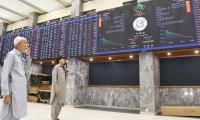Ideally, all major public policies should be based on sound evidence or, still better, on sound scientific evidence. Moving towards this ideal requires a better understanding of using evidence-based policymaking in real-world situations.
Policymaking in most situations is a multifarious activity that, among other things, will involve dealing with uncertainty, contention and complexity. The multifaceted nature of the issues that policy aims to solve implies that they can usually be approached in a number of ways. Designing and implementing the most efficient and effective policy solution is what good policy is all about. Sound evidence appropriately applied can significantly support good policy.
Evidence can be defined generally as that which is presented to support an assertion, and scientific evidence can be thought of as the evidence that is produced by using recognized scientific methods. Evidence is made available through some study or research and the scientific aspect is covered if the information that is provided is based on a methodology that involves quantitative and empirical data.
The aspiration to make policymaking more ‘scientific’ is distinctly seen in the work of prominent mid-twentieth century policy theorist Harold Lasswell. The push for a ‘policy science’ draws on the broader inclination towards making the academic study of politics conform with the methods used in the academic study of the natural sciences and, later on, in the study of the behavioral sciences.
The evidence can be used in various stages of the policymaking process, beginning with identifying the problems that need to be solved and extending forward to proposing effective solutions for the problems identified. However, in the real world of policymaking the use of evidence is rarely a straightforward endeavor.
The overall scenario in which the policymaking is being carried out can seriously influence how evidence figures in the process. This policymaking environment, in addition to individual actors and institutions, also includes relevant aspects of the social, economic and political contexts.
A revealing case of scientific evidence in ostensible contention with policymaking can be seen in the apparent unwillingness of policymakers to definitively stem continued environmental degradation in the face of substantial scientific evidence. Beginning with biologist Rachel Carson’s 1962 book ‘Silent Spring’, a major publication providing evidence of the dangers to the environment of pollution, scientists have continued to highlight evidence of environmental degradation from ozone depletion, increasing greenhouse gases, global warming, the thinning glaciers and the melting ice in the Arctic. In the case of the environment, we clearly see that policy decisions do not seem to be in lockstep with scientific evidence.
The convolutions in the process of utilizing evidence for policymaking can come from a variety of possible sources. These sources can include the unsatisfactory quality of the evidence or the inability of the policymakers to understand the evidence. Moreover, the concerns of policymakers may encompass a sphere that extends beyond the narrow ambit of a particular policy.
To put the policy decision environment in a broader perspective, it is important to recognize that the decision situation is one in which there is usually a level of uncertainty about causes and solutions. The evidence strives to provide information that aids in reducing the uncertainty. However, it is critical to recognize that the evidence that is put forth will also have varying levels of internal and external reliability and validity.
The evidence, even when it is of sound quality, will still have to navigate around concerns of costs and opportunity costs. Here opportunity costs are the competition that the cost of solving a policy issue faces with other avenues for spending this amount. There may be other issues, which while lacking strong evidence to support them, nonetheless, have certain characteristics that make them attractive for certain policymakers. Personal, and perhaps covert, interests of some policymakers may enhance the attractiveness of addressing a particular issue and in a particular way.
Another limiting factor in the utilization of evidence to arrive a policy decision may be the ability of the policymaker to appreciate and evaluate the evidence that has been made available. This inability may be a result of the high level of technicality of the evidence or the low level of technical ability of the policymaker
One allied concern with evidence and policymaking is that, intentionally or unintentionally, evidence may inappropriately be used to enhance support for a certain policy or to weaken support for a particular policy. Here the projection of the essentially inappropriate policy decision as being evidence-based and supported by scientific data can help deflect criticism.
One aspect of using evidence-based policymaking is that since gathering the evidence takes time and involves an expense there is sometimes a feasible recourse to utilize evidence already gathered somewhere to support a policy decision somewhere else. This utilization of evidence can manage to control the constraints of expenditure and time. However, the critical factor to consider in such cases is the applicability of the evidence that was gathered in the context of a certain area, culture, society and time to a differing context.
The pursuit of the ideal of more evidence-based policymaking is an aspiration whose fulfillment is complicated in its application to complex real-world situations. The quality of the evidence, the ability of the policymakers to gauge and use the evidence, and the personal and political concerns of policymakers can potentially impede the appropriate use of sound evidence in the making of good policy.
The writer heads a university-based
policy centre in Islamabad.
A health worker administers polio vaccine drops to a child during a door-to-door polio vaccination campaign in Lahore,...
Armed militants of the banned Tehreek-e-Taliban Pakistan pose for a photograph in Orakzai Agency. —...
An aeroplane of the national flag carrier of Pakistan is seen in this file photo. — AFPWhile Pakistan considers...
Representational image of a graph depicting various variables. — APP/FileInitiated by the centre and fiercely...
In this picture taken on April 16, 2023, people throng a market area during shopping in Lahore. — AFPOne of the...
Honour crimes also target men. In Sikandar Ali Lashari vs The State, SHC upheld conviction passed by ATC for honour...







